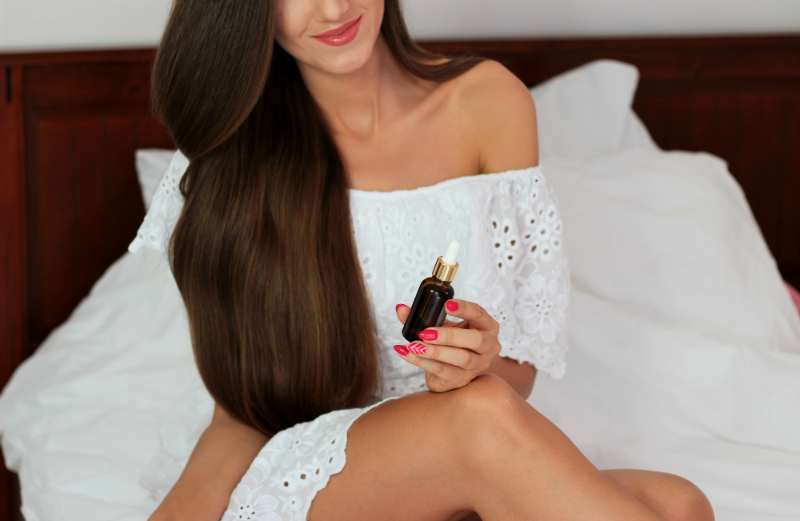
There is a reason why hair oiling is so popular. Not only does it deeply nourish and repair your hair but also allows you to choose a method that suits the condition of your hair and the lifestyle that you live. Choosing between wet and dry hair oiling is the most common dilemma that occurs during hair oil treatment. Do these two methods provide different action of a hair oil? Maybe, they bring different effects of the treatment?
We are describing both methods below.
Dry hair oiling.
There are two versions. In the first one, apart from hair oiling, we also do scalp oiling. It is an intensive form of hair oil treatment. Applying a natural oil onto your strands as well as scalp guarantees deep repair of hair stems and strengthens hair bulbs. Nourished and strong bulbs guarantee healthy growth of hair which stops falling out and grows thick and strong. When we do scalp oiling, we must remember to wash the oil down after specified time (minimum one hour).
The other form of dry hair oiling consists in applying the oil onto your strands only, avoiding the scalp. You can do this kind of oiling anytime, even a few times during the day. If the oil is applied to dry hair, it helps to detangle, tame and style your strands. There’s no need to wash the oil off – it works like a leave-in conditioner. Applied during the day or before styling in the morning, the oil protects your hair from any damage and makes hair soft, beautiful and shiny.
Wet hair oiling.
Obviously, you must wet your hair before the application to perform this form of oiling. You can use water or a home-made herbal infusion (e.g. nettle or horsetail infusion). Apply the oil to hair and scalp, wash it down after specified time. Similarly to dry hair oiling, an hour of “lying-in” of the oil is the minimum. The longer you keep it, the better – the oil has more time to penetrate inside your hair and bulbs and repair the whole damage.
Wet hair oiling can also be done after hair washing. You apply the oil exclusively to hair (from the mid-length to ends), right after washing. Remember not to use too much of the oil – not to weigh your hair down.
Wet hair oiling is the most effective in case of hair that is very dry, damaged and needs deep moisture. It is because the oil has the possibility to penetrate inside wet hair more quickly. What is more, damp strands absorb more oil. Women often notice enhanced volume and bounce after regular hair oiling. To sum up: wet hair oiling provides faster and deep repair whereas dry hair oiling (especially the form without oiling the scalp) protects and beautifies your hair much better. The perfect choice is to combine both methods: do wet hair oil treatment providing deep repair at least once a week; apply the oil onto dry strands every day. Good luck!








